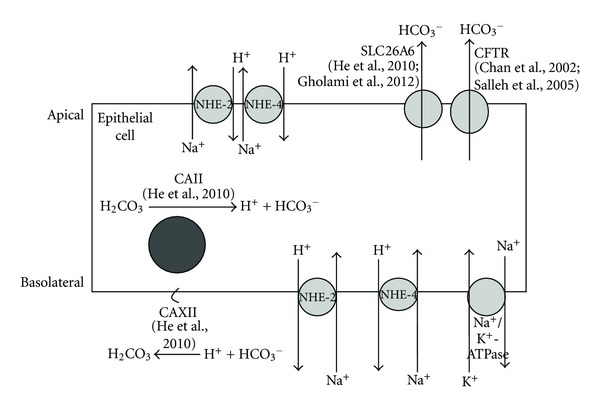Figure 7.

The proposed mechanism underlying uterine fluid pH regulation in the endometrial epithelial cell under E influence and at Es. CAII, which is responsible for H+ and HCO3 − generation, is upregulated by E and at Es. HCO3 − is extruded into the lumen via the apically located SLC26A6 and CFTR, which have also been reported to be upregulated by E and at Es. In order to maintain intracellular pH homeostasis, H+ is expelled into the plasma via the basolaterally located NHE2 and NHE4 in-exchange with Na+, which is pumped back into the plasma via the basolaterally located Na+/K+-ATPase. The apically located NHE2 and NHE4 may be involved in luminal Na+ secretion in-exchange with H+, which further contributes to the alkalinization of the uterine luminal fluid via H+ removal. Upregulation of membrane bound CAXII under these conditions is responsible for the conversion of H+ to H2CO3. CAII: carbonic anhydrase II; CAXII: carbonic anhydrase XII; CFTR: Cystic Fibrosis Transmembrane Regulator, SLC26A6: Cl−/HCO3 − exchanger, NHE: sodium-proton exchanger, Na+/K+-ATPase: Na+-K+-ATPase pump.
